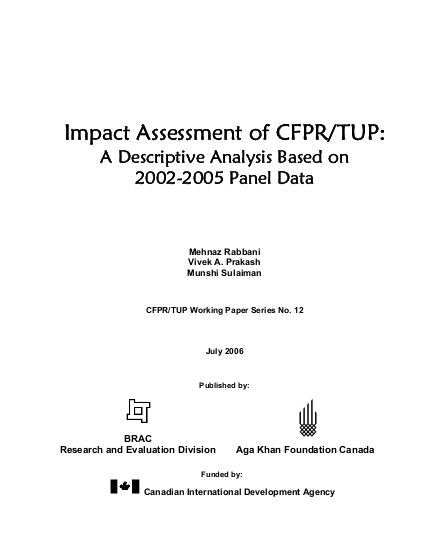
Over a quarter of Bangladesh’s people live in extreme poverty, not being able to meet even the barest of the basic needs. They spend most of their meagre, unreliable earnings on food and yet fail to fulfil the minimum calorie intake needed to stave off malnutrition. They are consequently in frequent poor health causing further drain on their meagre resources due to loss of income and health expenses. More often than not, the extreme poor are invisible even in their own communities, living on other peoples’ land, having no one to speak up for them or assist them in ensuring their rights. Extreme poverty also has a clear gendered face – they are mostly women who are dispossessed widows, and abandoned.
The Challenging the Frontiers of Poverty Reduction – Targeting the Ultra Poor (CFPR/ TUP) Programme was launched in 2002 with the vision of enhancing economic and social capabilities of ultra poor households in Bangladesh in a manner that could be sustained by the participants. It is widely accepted that most common governmental and non-governmental development interventions in Bangladesh fail to include the ultra poor. Microfinance, even if targeted towards the ultra poor, cannot bring about sustainable growth for the poorest of the poor (Matin 2002, Morduch 1999). This is because the ultra poor are crippled by multiple evils – malnutrition, illiteracy, lack of access to basic health services, limited access to community support – that keep them chronically poor (Sen and Hulme 2004). Transfer payments help the poor over the short term, but do not by themselves trigger sustainable income growth for the ultra poor.